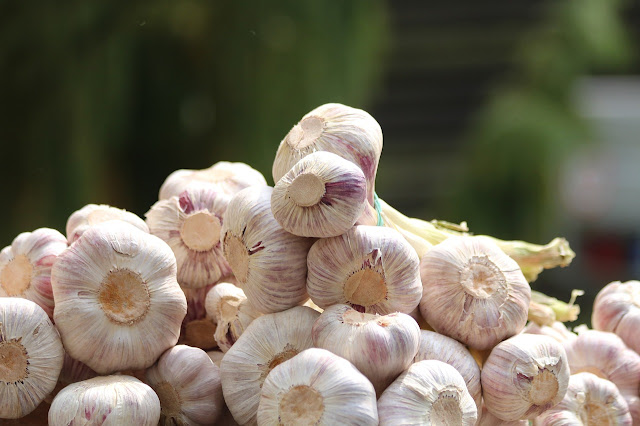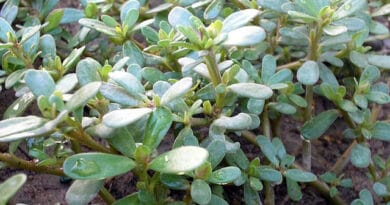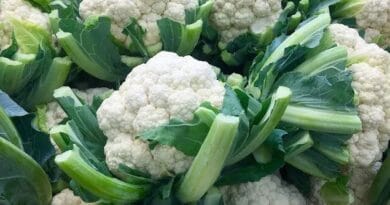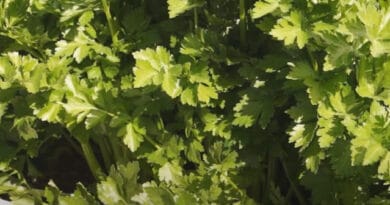Cultivation of Garlic ( Allium sativum L)
Uses of Garlic ;
- Garlic is a popular ingredient in cooking and has a very delicious taste
- Garlic contains many useful compounds with a lot of medicinal properties
- Garlic acts as a blood purifier
- Garlic provides relief from Cold and Flu
- It lowers the cholesterol level
- It is immensely beneficial in regulating blood pressure, and Blood sugar levels
- Act as an anti-bacterial and anti-parasitic
- It strengthens the body to fight against several diseases.
- Garlic is useful in curing the fungal diseases of the skin
Nutritional Value of Garlic:
Nutritional value of 100 g of garlic is as follows
| Serving Size 100 g | %DV | |
| Calories | 149 kcal | |
| Total Carbohydrate | 33 g | 11% |
| Dietary Fiber | 2.1 g | 8.00% |
| Sugar | 1 g | |
| Protein | 6.4 g | 13% |
| Choclestrol | .014 g | 0% |
| Saturated fat | .0.5 g | 1% |
| Sodium | 46 mg | 3% |
| Potassium | 401 mg | 9% |
| Iron | 1.77 mg | 22% |
| Calcium | 181 mg | 18% |
| Magnacium | 1.6 mg | 84% |
| Vitamin C | 31.2 mg | 52% |
| Vitamin B6 | 1.2 mg | 62% |
| Vitamin D | 0% | |
| Cobalamin | 0% | |
| *Per cent Daily Values are based on a 2,000 calorie diet. Your daily values may be higher or lower depending on your calorie needs. | ||
Climate Requirement for Garlic Cultivation ;
Garlic is a cool-season crop and it succeeds best in a mild season without extremes of heat and cold. Short days are very favorable for bulb formation.
Soil Requirement for Garlic Cultivation ;
Sandy loam and silty loam soils are best suited for garlic. The land is prepared by giving 5-6 ploughings.
Varieties of Garlic ;
There is no distinct variety of garlic. However, the varieties may be broadly classified as follows:
(i) Desi or local variety. Big sized bulbs or cloves, for example, Kanwri. Fawri and Rajalla Gaddi in South India, which possess small to medium-sized bulbs with a small/large number of cloves.
(ii) Acclimatise variety. Early white or Medican varieties Creole and Tatule and Italian
Some varieties developed through clonal selection are as follows —
Seed Sowing of Garlic ;
(a) Time of sowing. Garlic is planted in September, October in the Plains of North India, August-November in South India, and March-April in the hills.
b) Seed rate. About 55 to 95 kg cloves are needed for one acre.
(c) Method of sowing. Garlic is propagated from the small cloves or bulblets. Healthy cloves or bulblets free from disease and injuries should be used. They are generally planted by dibbling method at 5 to 7.5 cm deep, keeping their growing ends upwards. Cloves are placed 7.5 cm apart in rows 15 cm apart and covered with loose soil.
Manuring Requirement for Garlic Cultivation ;
The recommended fertilizer dose is 40 kg Nitrogen, 20 kg Phosphorus & 20 kg Potassium per acre.
Intercultural Operations in Garlic Cultivation;
First and second weeding is with a hand hoe or khurpi one and two months after sowing of this crop. Hoe the crop just before the formation of bulbs (two and a half months from sowing) loosens the soil and helps in setting the bigger and well-filled bulbs. The crop should not be weeded out or hoed at the latter stage, because this may damage the stem and impair the keeping quality of the sprouting and the cloves already formed. Oxyfluorfen 0.150 kg/ha + Quizalofop ethyl 0.050 kg/ha most effectively controlled the weeds in garlic.
Irrigation;
The first irrigation is given after sowing, afterwards the field is irrigated every 10 to 15 days, as the season warms up. At this stage, more frequent irrigation is required. There should be no scarcity of moisture in the growing season, otherwise, the development of the bulbs will be checked. When the bulbs are mature, irrigation should be done sparingly. The last irrigation should be given two to three days before harvesting to make it easy without damaging the bulb.
Disease and Pest Management in Garlic ;
Pest Management ;
Disease Management ;
Harvesting of Garlic;
Garlic is a crop of four and a half to five months. When the leaves start turning yellowish or brownish and show signs of drying up (usually about a month or so for the emergence of seed stock), the crop is ready for harvest. The plants are pulled or uprooted with a spade or Khurpi. The harvested plants are tied into small bundles and kept under shade for 2 to 3 days for curing.
Yield of Garlic;
The yield of garlic varies from 1600 to 4000 kg per acre, depending on the variety and cultural method undertaken.
Storage;
The bulb may be stored by hanging them on bamboo sticks or by keeping them on dry sand on the floor in a well-ventilated room and well-cured garlic bulb can be kept for one to one and half months in an ordinary well-ventilated room if dust smoke can be given to the bulb they can be stored for eight to ten months. Garlic can also be stored at 0°C (32°F) with 60 percent relative humidity.
Explore Further ;



